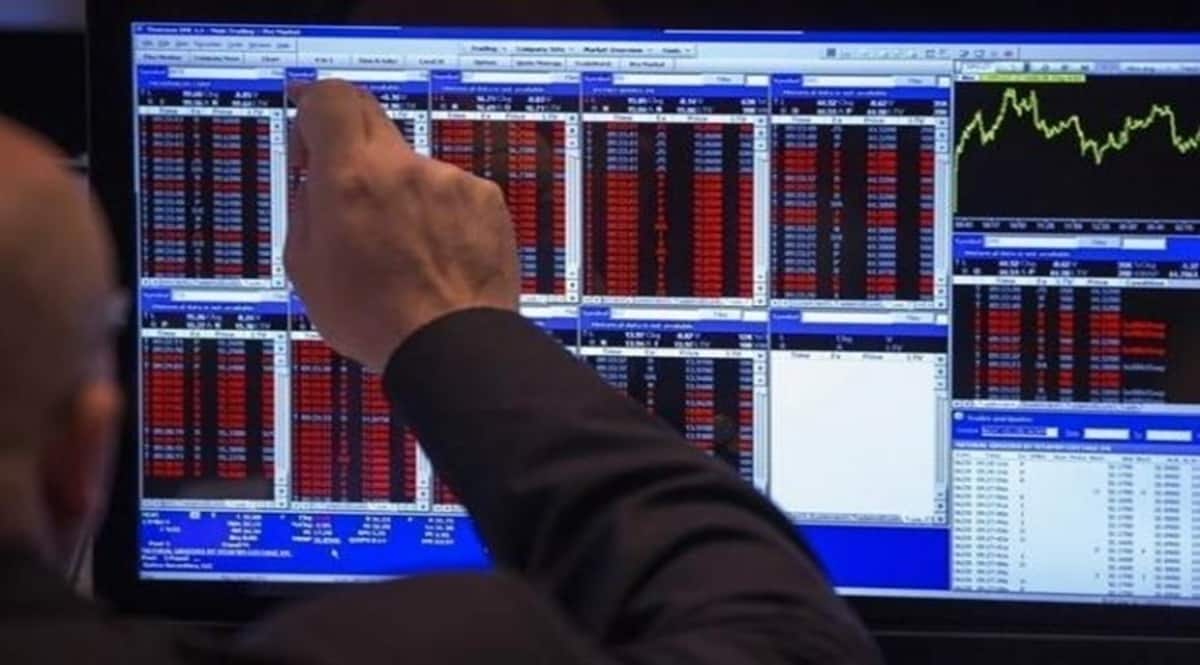European markets trimmed gains after the European Central Bank unveiled fresh measures on Wednesday to temper a market rout that has fanned fears of a new debt crisis before what is expected to be one of the sharpest U.S. rate hikes since 1994.
Hopes of a quiet run in to what is forecast to be a three-quarter-point hike by the Federal Reserve later on Wednesday were quickly dashed as the ECB’s unexpected meeting – less than week after its last scheduled one – prompted a rush of activity.
The euro which was up as much as 0.3% before the statement, trimmed gains and was marginally weaker on the day at $1.0407Italy’s 10-year bond yield, which stands to benefit the most from the ECB’s plans, was last down 25 basis points on the day at 3.97%, above its session low of around 3.87%. Spanish and Portuguese 10-year yields also came off their day’s lows but were still sharply down on the day. .
“I think essentially it is the bare minimum of what could be expected, but I also believe it’s the most realistic outcome of what they could compromise (on) today,” said Piet Christiansen, chief analyst at Danske Bank in Copenhagen.
INFLATION FEARSThe worries about rising borrowing costs and global inflation have been hammering financial markets all year.World stocks are down over 20%, bond markets have been routed and fears that drastic Fed action could tip the world into recession means the U.S. central bank’s moves later will be crucial for traders.
Treasury yields had hit decade highs overnight and the dollar a 20-year peak as futures implied it was near-certain the Fed would hike by 75 basis points to a range of 1.50-1.75%.
That would be the biggest increase since 1994, and markets already have rates reaching an eye-watering 3.75-4.0% by the end of the year.“Against a backdrop of sky-high inflation, rising rates, and growing recession concerns, the S&P 500 has had its worst start to the year since 1962,” analysts at Goldman Sachs said.
“A likely coming peak in inflation is probably not sufficient to see the bottom…”They recommended that investors reduce portfolio duration and increase exposure to real assets.With so much priced in, a few brave investors, also buoyed by the ECB, were looking for bargains and S&P 500 futures were up 0.7%, while Nasdaq futures rose 0.75% and Dow futures added 0.4%.
MSCI’s broadest index of Asia-Pacific shares outside Japan was closing almost flat, but is down sharply on the week.Japan’s Nikkei lost 1.1%, though sentiment was helped by a survey showing an improvement in confidence among Japanese manufacturers.Chinese shares bucked the trend with a gain of 1.3%. Data on Chinese retail sales and industrial output for May were a little better than forecast, but still showed the drag from coronavirus lockdowns.
Authorities in Beijing said on Tuesday the city was in a “race against time” to get to grips with its most serious outbreak since the pandemic began.
WHATEVER IT TAKES 2.0?The ECB’s move allowed bond markets everywhere to rally after their recent hammering, with German Bund yields swooping down to 1.67% and 10-year Treasury yields dropping to 3.37% from Tuesday’s peak of 3.498%.
Two-year yields stood at 3.30%, after touching the highest since 2007 at 3.456% overnight. Given many U.S. borrowing rates are linked to yields, financial conditions have already tightened markedly there even before the Fed hikes.
ECB chief Christine Lagarde is due to speak in London at 1600 GMT. It is almost a decade since her predecessor Mario Draghi did the same at the height of the euro zone debt crisis.
“I think Lagarde will try to do ‘whatever it takes’ 2.0 tonight” Lorenzo Codogno founder of LC Macro Advisers, said describing the current situation as a perfect storm. “But the markets won’t be happy if she comes empty-handed.”
U.S. Treasury yields are the benchmark for bonds worldwide, so financial conditions are tightening pretty much everywhere. That is a major headwind for consumer spending power, while pressuring emerging market countries that borrow in dollars.
It has also tended to boost the U.S. dollar, which had hit a 20-year high against a basket of currencies before the ECB’s news, led by big gains on the low-yielding Japanese yen.
The dollar flop in Europe left it trading at 134.5 yen , having reached heights last visited in 1998 at 135.60.
Those gains had come as the Bank of Japan ramped up its bond buying to keep yields near zero, even as much of the rest of the world tightens policy.Still, the sheer pressure on the yen and bonds has stoked speculation the BOJ could be forced to amend its yield control policy at a meeting on Friday.Surging yields, inflation and a sky-high dollar have been a burden for gold, which was near its lowest in a month at $1,826 an ounce.
Oil prices stumbled after the Organization of the Petroleum Exporting Countries (OPEC) stuck to its forecast that world oil demand will exceed pre-pandemic levels in 2022.
Brent was almost a dollar softer at $120.60, while U.S. crude dipped $1.23 cents to $117.70 per barrel.

Leave a Reply